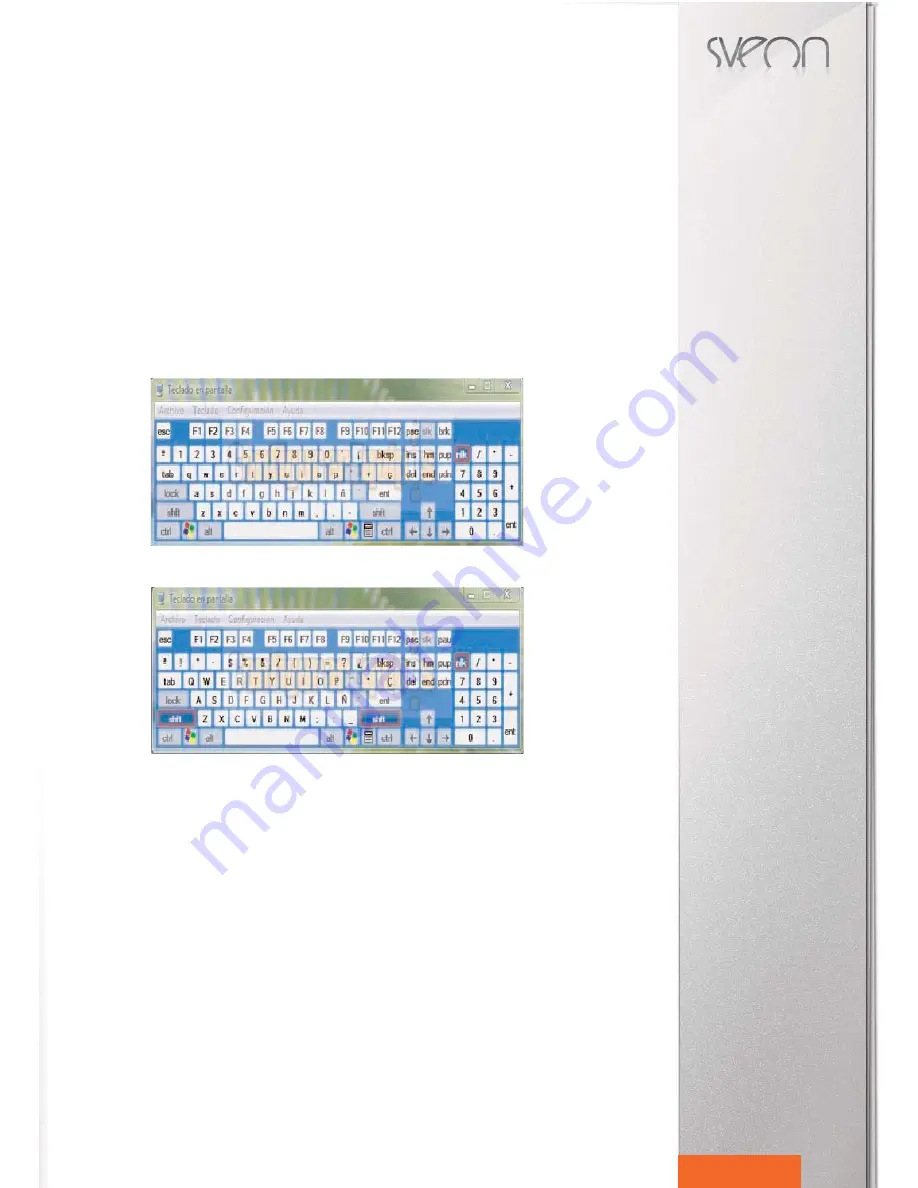
SCT020 User Guide
Index
1.Welcome
2.Features
3.Technical Specifications
4.System requirements
5.Content
6.Hardware
7.Installation
7.1 Driver installation for Smart card reader
7.2 Driver installation for DNIe
8.Multimedia keyboard
9.Keyboard
9.1 Key location
9.2 Special functions
9.3 Numeric pad
10.FAQs
11.Warning: Disposal of waste batteries
16
English
Win:
Press to enable the Start menu.
Alt:
This key function is similar than Ctrl.
Alt Gr:
Enables and edits the graphic characters in keys like these: |, @, #, ¬, [, ], {, } or €.
Insert:
Enables the insert mode.
Start:
Press to move the higlight to the begining of a line.
Up page
: Press to move the highlight to the previous line.
Del or Delete:
Press to delete a character or space located in the right of the highlight. This key can have special func-
tions in different programs and, in the BIOS, can be used as a Setup direct access.
Fin:
Press to move the highlight to the end of a line.
Down page:
Press to move the highlight to the following line.
Numeric lock:
Enables or disables the numeric keys in the numeric pad. This function can be programmed from Setup
menu to enable or disable it when you turn the computer on.
Backspace:
This key includes an arrow pointing to the left. Press it to move the highlight to the left, deleting spaces or
characters.
Arrow buttons
(up, down, left, right): These buttons include an arrow to make easier the identification of their functions.
Press to move the highlight to the selected direction, but they don’t delete or do more functions. In some programs, like
text editors, you can use these keys together with the key Ctlr to move the highlight to the next or previous word or to the
next or prefious paragraph.
Enter:
This is the main and most common key in the keyboard. Press it to confirm an operation, an option or an order.
Windows OS includes a virtual keyboard, called Screen Keyboard. You can access it from Start - All the programs - Ac-
cesssories - Accessibility. If you have problems with your keyboard, you can use it.
The previous picture shows the Windows virtual keyboard with the Uppercase Lock disabled.
The previous picture shows the Windows virtual keyboard with the Uppercase Lock enabled.
9.3 Numeric pad
The numeric pad is located in the right of the keyboard and includes 17 keys:
In the first line you can find the keys: Num Lock, bar and the symbol of multiplication.
Below them, you can find the numeric keys from 1 to 9 in the following order: 7 8 9, 4 5 6 y 1 2 3. These keys also inclu-
des different option when you use them together with the key Shift or disabling the Numeric Lock function. These func-
tions are:
7 -> Start
8 -> Up
9 -> Page up
4 -> Left
5 -> No secondary functions
6 -> Right
1 -> End
2 -> Down
3 -> Down page
In the last line there are only three keys: the key with 0, the key with the sign . and other key of Enter. These keys include
also double function: 0 -> Ins (insert) / . -> Supr.
To make easier the usage of the keyboard, you can find three quick access keys to the functions Scape, Tap or CapLock.
Содержание SCT020
Страница 1: ...Manual de usuario 2 User Guide 10...
















